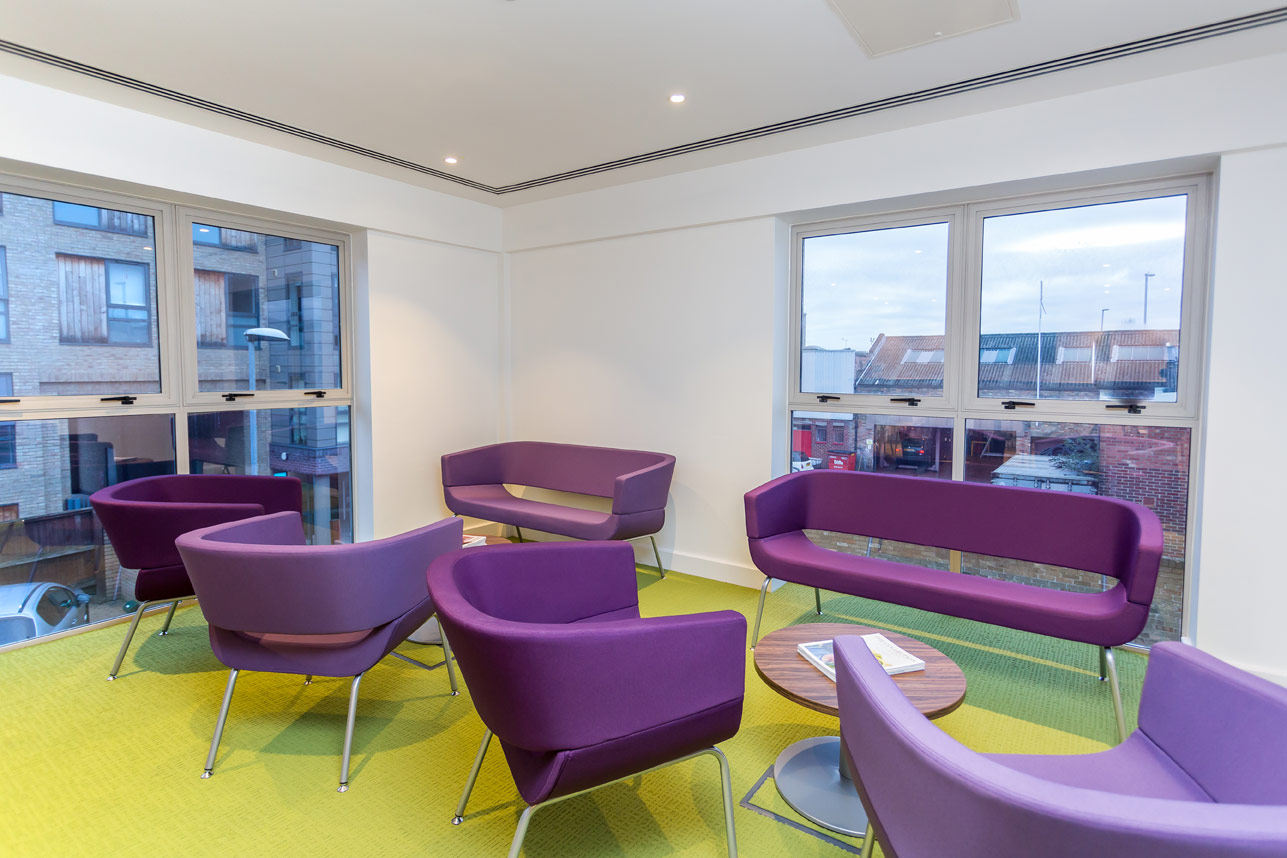A successful office refurbishment can revitalise your workspace, enhance staff well-being, and support business growth. However, it’s vital to minimise downtime during an office refurbishment to maintain productivity and morale. The right preparation and phased approach help reduce the risk of unnecessary disruption.
Define Your Project Scope and Timeline
Begin with a clear vision for your office refurbishment. Establish your objectives, outline your project scope, and set a practical timeline. Consider the unique needs of your business, such as technology requirements and compliance. Identifying challenges like potential IT interruptions or noise will help you develop solutions early with your refurbishment partner. Strong preparation is key to minimising downtime during an office refurbishment.
Opt for a Phased Office Refurbishment Approach
A phased office refurbishment is one of the most effective ways to minimise disruption. Divide your workspace into sections and refurbish each area in sequence. This allows staff to continue working in unaffected zones while other sections are being updated. Plan the sequence carefully, prioritising areas that need attention most. Use clear signage and temporary partitions to keep everyone informed and comfortable.
Temporary Workspaces: Keeping Productivity High
If your office refurbishment is more extensive, consider relocating staff temporarily. Options include:
- Renting a co-working space with essential facilities.
- Setting up remote working arrangements for businesses that can operate digitally.
- Using less-affected meeting rooms or communal areas as makeshift workstations.
Support your team with reliable connectivity, secure remote access, and collaborative tools such as Microsoft Teams or Zoom. These measures are vital for minimising downtime during an office refurbishment.
Schedule Works Outside of Core Office Hours
Timing is crucial for office refurbishment projects. Whenever possible, schedule disruptive works outside standard office hours. Evening and weekend shifts significantly reduce disruption, enabling staff to focus during the day. For teams that must remain onsite, consider a split-shift system to avoid peak refurbishment periods. Additionally, soundproof barriers and dust control help keep disturbances to a minimum.
Communication: The Backbone of a Smooth Refurbishment
Open and regular communication is essential. Keep your team updated on the refurbishment schedule, workspace changes, and project milestones. Use email updates, notice boards, and meetings to share information. Invite feedback to identify and address issues early, helping maintain productivity and staff morale throughout the project.
Prioritise IT and Connectivity
Technology plays a crucial role in any modern office. Work with your IT provider to keep systems running during refurbishment. Actions to minimise downtime during an office refurbishment include:
- Regular data backups and setup of backup systems.
- Coordination with service providers to keep internet and phones operational.
- Pre- and post-refurbishment testing to avoid surprises.
For remote or relocated teams, provide secure access to all necessary systems. Cloud-based solutions further simplify transitions and reduce reliance on physical servers.
Partner with Office Refurbishment Specialists
Working with experienced office refurbishment professionals is invaluable. The right partner will help you develop a phased plan, solve problems quickly, and handle logistics. Look for a company with a proven track record and a collaborative approach. Comprehensive support from design through to project handover reduces risk and minimises downtime during an office refurbishment.
Final Checks Before Resuming Full Operations
Carry out a thorough inspection before your team returns. Check the quality of the work, confirm safety standards, and make sure IT and communications are fully functional. Invite your staff to report any lingering issues, so these can be resolved swiftly. A well-managed handover ensures a comfortable and productive return.
Key Takeaways: Minimise Downtime During an Office Refurbishment
To minimise downtime during an office refurbishment, focus on clear planning, regular communication, and strong partnerships. A phased approach, robust IT systems, and engaged staff will help your business navigate refurbishment with minimal disruption.
At Bluespace, our experience in office refurbishment ensures projects finish on time and with as little impact as possible. If you’re ready to refresh your workspace, get in touch with our team today.ion into a revitalised and efficient working environment.
Looking for expert guidance on your office refurbishment? Get in touch with our team today to discuss your project.















